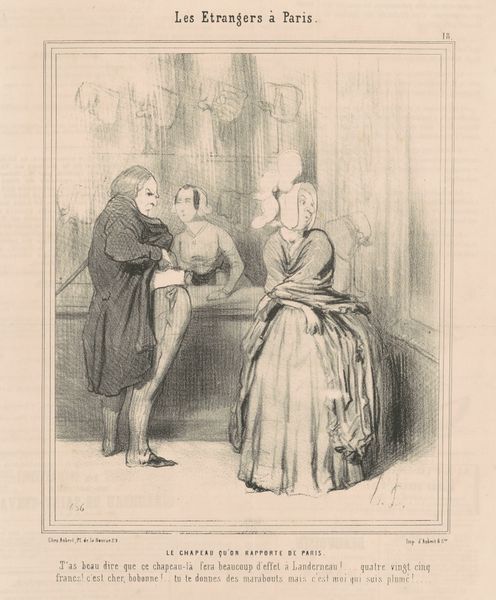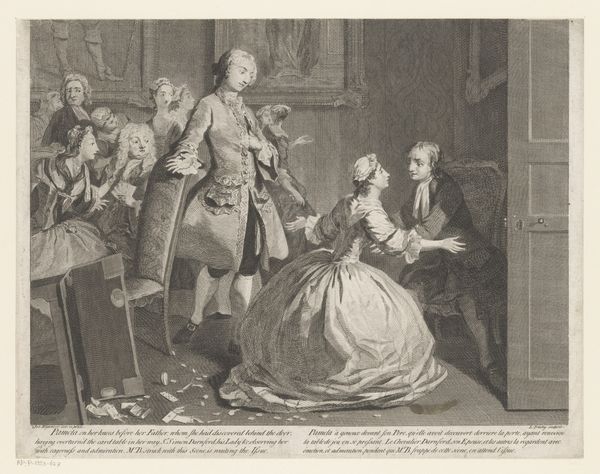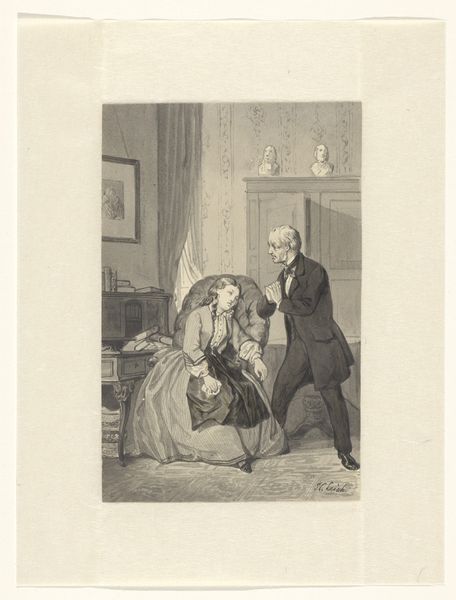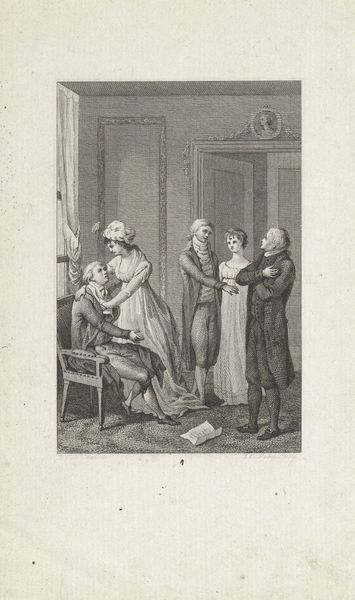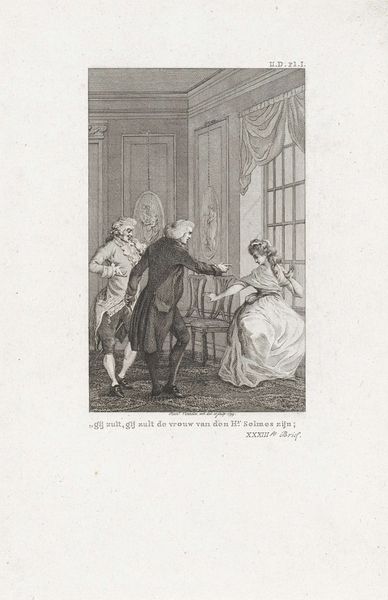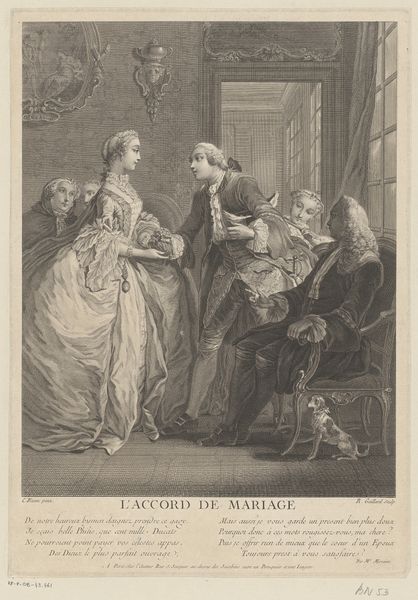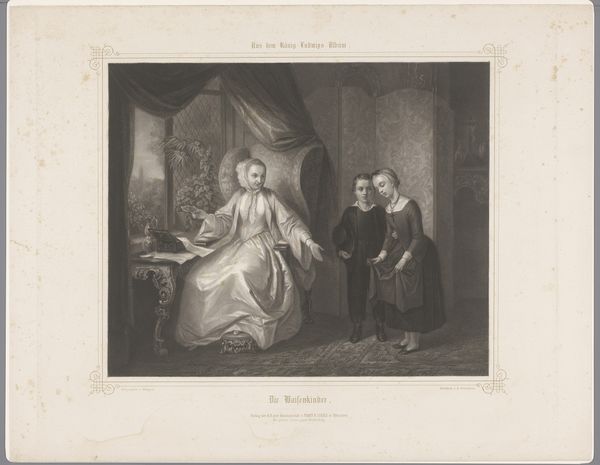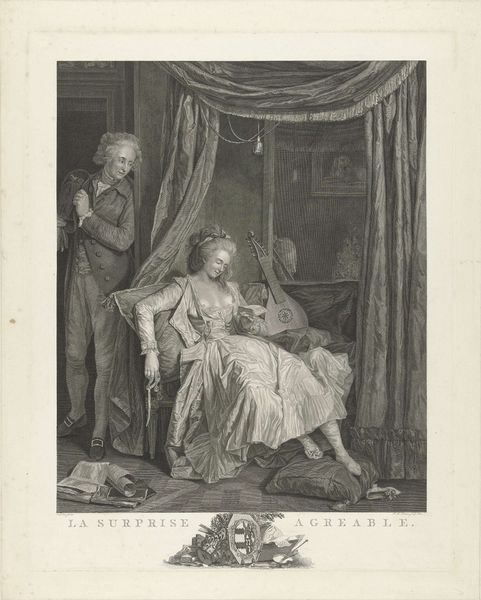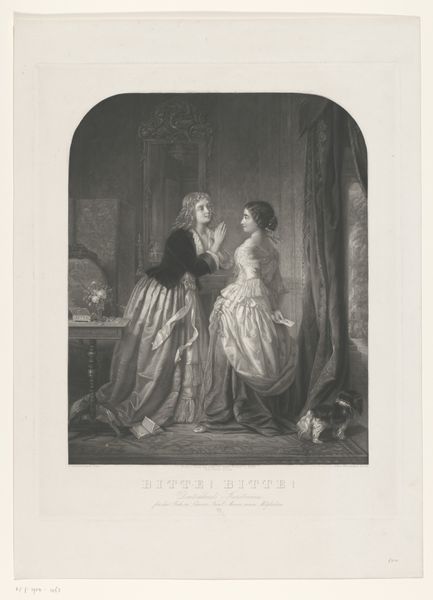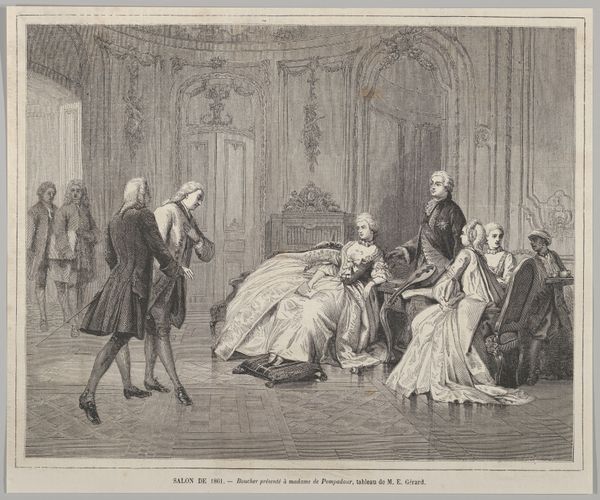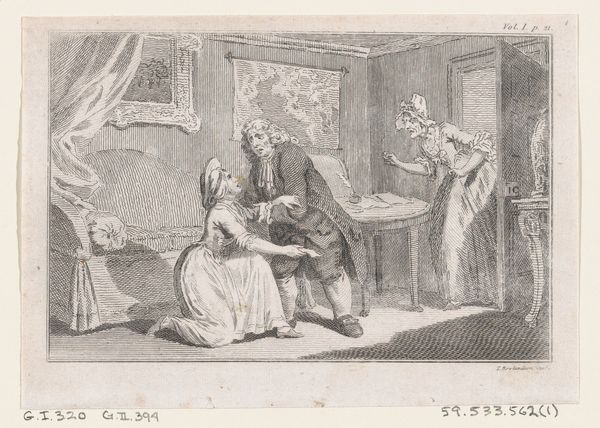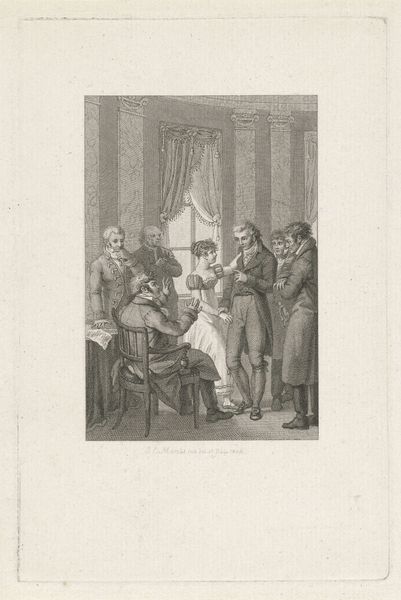
Elisabeth van Frankrijk aan het bed van een zieke 1842 - 1887
0:00
0:00
carelchristiaanantonylast
Rijksmuseum
Dimensions: height 210 mm, width 156 mm
Copyright: Rijks Museum: Open Domain
Curator: This is "Elisabeth van Frankrijk aan het bed van een zieke" ("Elisabeth of France at the sickbed"), a drawing in pencil on paper created sometime between 1842 and 1887, and currently held in the Rijksmuseum collection. The artist is Carel Christiaan Antony Last. Editor: It’s immediately striking – somber and muted, like a memory filtered through gauze. The tight linework gives a strange formality to such an intimate, sorrowful scene. Curator: The composition certainly contributes to that effect. Notice how Last employs a limited range of tonal values, relying instead on the density and direction of lines to define form and texture. See how the textures are rendered - from the bed linens to the voluminous gown of the central figure - this gives an aesthetic unity but also a restrained feel to the overall image. Editor: And it amplifies the melodrama. The setting is minimal, yet there's a palpable sense of weight. This depiction speaks to a larger narrative beyond what's presented in this specific scene; the viewer is led to construct and consider their interpretation of the situation. It would seem that "Elisabeth van Frankrijk" refers to Louis XVI’s sister, who devoted herself to charitable work. We might think of it less as a sentimental depiction and more of an ideological statement. Curator: Yes, that connection is intriguing. Considering the broader context of the Romantic era, one could argue that the subject embodies notions of piety and social responsibility embraced within Royalist circles during times of societal turmoil. Observe also the artist's use of line to subtly guide the viewer's eye, initiating at the gentleman on the left, then softly moving over to the person sitting in the chair, before moving back into the shadows cast on the wall. Editor: A clever, albeit conventional tactic for directing visual traffic and narrative cohesion, indeed. I appreciate that you highlight this feature; the structure makes it easier to read the visual drama within a highly coded society dealing with sickness and perhaps some sense of religious devotion or a call for action through pity. This could be a political position rendered with elegance and emotional constraint. Curator: Well, regardless of your political reading, the artist surely demonstrates a deftness with the medium. Its graphic and structural dimensions are compelling beyond any superficial representational reading. Editor: Agreed. Ultimately, the success here comes from skillfully embedding a historical moment inside a powerful formal construction. We depart pondering not just a specific history, but art’s ability to reframe complex historical moments as resonant formal statements.
Comments
No comments
Be the first to comment and join the conversation on the ultimate creative platform.

